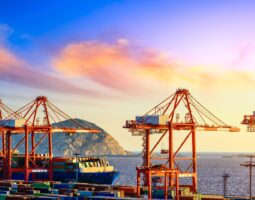Breaking Down the Basics of the New Asia-Pacific RCEP Trade Agreement

The newly signed RCEP trade agreement is big news for global commerce.
A group of 15 Asia-Pacific nations came together in November to sign the Regional Comprehensive Economic Partnership Agreement (RCEP) after eight years of preparation. With nearly a third of the world’s population and nearly 30 percent of world trade under its purview, the agreement is shaping up to be one of the most substantial trade deals in several decades.
Which Countries Have Signed RCEP?
A total of 15 nations in the Asia-Pacific region have signed the agreement.
Ten signatories are member states of the Association of Southeast Asian Nations (ASEAN).
- Thailand
- Philippines
- Myanmar
- Indonesia
- Cambodia
- Laos
- Malaysia
- Singapore
- Vietnam
- Brunei
Five other partner nations join the ASEAN signatories as members of RCEP.
- China
- Australia
- Japan
- South Korea
- New Zealand
India initially engaged in RCEP negotiations and even signaled interest in membership. But the Modi administration pulled out late in the process. According to the BBC, the RCEP members have stated that India still has a path to join the agreement later.
How Does the Trade Agreement Affect Member Nations?
The RCEP agreement aims to simplify trade among member nations with reduced tariffs between respective signatories. Consequently, the Brookings Institute estimates that the agreement could by 2030 increase world trade by $500 billion. According to the Institute, ASEAN members stand to see substantial benefits, though the existing CPTPP agreement means Northeast Asian members are likely to see even more robust economic gains.
Implications for the United States
The RCEP notably arrives in the wake of the Trump Administration’s pullout from the Trans-Pacific Partnership (TPP). As the U.S. begins to transition to a Biden-Harris administration, Asia-Pacific trade relations remain in limbo and the trade war with China continues. President-elect Biden has not explicitly stated whether RCEP membership is on the table for the U.S., as international trade has been a lower policy priority for the incoming administration.
Scarbrough International is paying close attention to developments around RCEP. Our supply chain specialists will pass on new information as it arrives.

